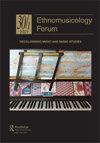Music and sound in times of violence, displacement and conflict
IF 0.5
1区 艺术学
0 MUSIC
引用次数: 0
Abstract
In 1980, Peru was plunged into a bloody internal war confronting the state and two armed groups: Sendero Luminoso (Shining Path) and the Movimiento Revolucionario Túpac Amaru (MRTA). The Shining Path was a communist Maoist terrorist group whose stated aim was to replace ‘bourgeois democracy’ with a ‘new democracy.’ It claimed to fight against the elites to empower the campesinos (‘Indigenous peasants’). However, they lost track of their initial aims, and ultimately committed atrocities against the campesinos themselves, soldiers, trade unionists, and other civilians. Their violence was met with escalating violence from Peru’s state armed forces, and many lives were lost. The conflict spanned nearly 20 years claiming over 70,000 lives and traumatising the entire country. In the aftermath, violence was replaced by silence along with distrust, disunity and distance between the Andes and Lima, the capital – a silence that only music seemed to break. Trauma bled through lyrics and notes when it was banished from political and public discourse. This violence began when I was born and continued until after I left my country at 17. My whole life in Peru was framed by conflict, violence, fraught silence, loss, racism and segregation exacerbated by the conflict, and the trauma it left me, my family, and the whole country. I cannot deny or escape this beginning in life, but I can attempt to understand and work for change. I have made it my academic purpose to study the role of music as a tool for conflict transformation, particularly during and after periods of hyper violence and social division – music as an unflinching outlet when our speech is silenced by tears, fears and impotence. Yet society must also look beyond the positive potential and impact of music, to also consider its potential association with manipulation, amassing power, and stoking violence. Where words fail and the state does not help, music can play many roles, including in acknowledging trauma, promoting understanding of the roots of conflict, negotiating social guilt, facilitating public debate, contributing to reconciliation, expressing a collective sense of cultural survival, and preserving social memory (Fast and Pegley 2012; O’Connell and Castelo-Branco 2010; Ritter and Daughtry 2007; Urbain 2008). But it can also be a painful reminder of a violent past, and thus a site of tension between the competing desires to remember and to forget. How, when, and why do these roles play out? How has music been used to understand, remember and transform social conflict?暴力、流离失所和冲突时期的音乐和声音
1980年,秘鲁陷入了一场血腥的内战,面对国家和两个武装组织:光辉道路(Sendero Luminoso)和革命运动Túpac Amaru (MRTA)。光辉道路是一个毛主义恐怖组织,其宣称的目标是用“新民主主义”取代“资产阶级民主”。它声称要与精英斗争,以赋予campesinos(“土著农民”)权力。然而,他们失去了最初的目标,最终对农民自己、士兵、工会会员和其他平民犯下了暴行。他们的暴力遭遇了秘鲁国家武装部队不断升级的暴力,许多人丧生。这场冲突持续了近20年,夺走了7万多人的生命,给整个国家带来了创伤。之后,暴力被沉默所取代,同时还有不信任、不团结和安第斯山脉与首都利马之间的距离——似乎只有音乐才能打破这种沉默。当创伤被排除在政治和公共话语之外时,它在歌词和音符中流淌。这种暴力从我出生时就开始了,一直持续到我17岁离开祖国之后。我在秘鲁的一生充满了冲突、暴力、令人担忧的沉默、损失、种族主义和因冲突而加剧的种族隔离,以及它给我、我的家人和整个国家带来的创伤。我不能否认或逃避生命的这个开端,但我可以试着去理解并为改变而努力。我的学术目标是研究音乐作为冲突转化工具的作用,特别是在极度暴力和社会分裂期间和之后——当我们的言语被眼泪、恐惧和无能所压制时,音乐作为一种坚定的出口。然而,社会也必须超越音乐的积极潜力和影响,考虑到它与操纵、积聚权力和煽动暴力的潜在联系。在言语失败、国家无能为力的情况下,音乐可以发挥多种作用,包括承认创伤、促进对冲突根源的理解、协商社会内疚、促进公共辩论、促进和解、表达集体文化生存感和保存社会记忆(Fast and Pegley 2012;O 'Connell and Castelo-Branco 2010;Ritter and Daughtry 2007;班2008)。但它也可能是对暴力过去的痛苦提醒,因此是记忆和遗忘这两种相互竞争的欲望之间的紧张场所。这些角色是如何、何时以及为什么发挥作用的?音乐是如何被用来理解、记忆和改变社会冲突的?
本文章由计算机程序翻译,如有差异,请以英文原文为准。
求助全文
约1分钟内获得全文
求助全文
来源期刊

Ethnomusicology Forum
MUSIC-
CiteScore
1.10
自引率
25.00%
发文量
29
期刊介绍:
Articles often emphasise first-hand, sustained engagement with people as music makers, taking the form of ethnographic writing following one or more periods of fieldwork. Typically, ethnographies aim for a broad assessment of the processes and contexts through and within which music is imagined, discussed and made. Ethnography may be synthesised with a variety of analytical, historical and other methodologies, often entering into dialogue with other disciplinary areas such as music psychology, music education, historical musicology, performance studies, critical theory, dance, folklore and linguistics. The field is therefore characterised by its breadth in theory and method, its interdisciplinary nature and its global perspective.
 求助内容:
求助内容: 应助结果提醒方式:
应助结果提醒方式:


